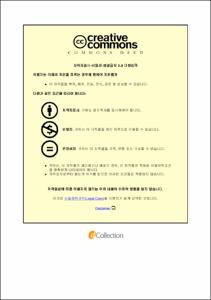커피폐기물을 이용한 고기능성 다공성 발포체 개발 및 그 응용
- Alternative Title
- Development and application of high performance porous foam using waste coffee
- Abstract
- Ceramic foams exhibit various micro-structures and mechanical properties with different functions, including separation, storage and heat shielding, which depends upon the composition and manufacturing process. Also, ceramic foams are lightweight structural material due to low density, high specific surface area and high specific strength. Therefore, the ceramic foams are one of the validating materials that increase their application range in various fields such as catalyst bed, filter, electrode material for fuel cell, insulation material, sensor and so on.
Currently, the cost of recycling waste coffee powder is increasing as the domestic coffee market grows. Therefore, a most efficient way needed to recycle waste coffee powder. In this context, our studies focused on production of ceramic foams using waste coffee.
In order to produce the ceramic foam using waste coffee, initially, the carbonization process condition of has been done. The waste coffee was carbonized on a hot plate at 400 oC. The cellulose particles of waste coffee are maintained for 3 hours for the carbonization, and the ratio of C is highest as a result of carbonization for 3 hours.
The ceramic foam has many pores and advantageous to thermal transfer by structural features. By utilizing the advantage of thermal transfer, a heat sink was developed using the synthesized ceramic foam from waste coffee. A universal testing machine was used to measure the compressive strength. The compressive strength of ceramic foam using waste coffee was about 3.384 MPa. The temperature of LED(light emitting diodes) PCB(printed circuit board) after protecting with the synthesized ceramic foam was about 53.6 °C, and the performance of the aluminum heat sink was confirmed to be 99.8%. In addition, it was confirmed that the hybrid type manufactured by adding ceramic foam as the heat sink has better performance than the conventional heat sink. The approach for developing the heat sink is very simple and cost-effective. The synthesized ceramic foam facilitates the manufacturing process with higher durability of LED PCB, which results in the cost-effective material. Therefore, waste coffee based ceramic foams are readily available to replace the existing aluminum heatsink.
We synthesized a waste coffee based ceramic foam for its utilization in constructing materials. The compression strength of ceramic foam block was about 2.31 MPa, and the far-infrared emissivity and emission power of foaming ceramics for construction materials were confirmed 0.917 and 369.610 W/(m2·μm), respectively. The deodorization rate of NH3 and H2S of the ceramic foam for construction materials were 83.7% and 99.8%, respectively. The foaming ceramic for construction materials was satisfied the standard of the emission of environmentally hazardous substances when compared with standard values.
We applied the developed ceramic foam for the water filter. After using ceramic foam as a filter for water purification, it was confirmed that no substances other than lead and arsenic were detected. All of the values are below the reference value, and it can be confirmed that the harmful component does not dissolve in the foam ceramic. After a long period of time, the pH was measured higher on the water-quality test, but it seems to be possible to apply as a water filter for purification of water quality.
In conclusion, we confirmed that the ceramic foams using waste coffee powder have various functionalities and it could be applied in various fields.
- Issued Date
- 2018
- Awarded Date
- 2018.2
- Type
- Dissertation
- Keyword
- 커피폐기물
- Publisher
- 부경대학교
- Affiliation
- 부경대학교 대학원
- Department
- 대학원 LED공학협동과정
- Advisor
- 양현경
- Table Of Contents
- 목 차
Abstract viii
1. 서론 1
1.1 다공성 세라믹스 2
1.2 커피폐기물 8
1.2.1 커피성분 8
1.2.2 커피폐기물 성분 9
1.2.3 커피 소비량 10
1.2.4 커피폐기물 재활용 현황 16
1.3 연구목적 18
1.3.1 히트싱크용 발포체 18
1.3.2 건축자재용 발포체 22
1.3.3 수질정화용 발포체 24
2. 배경이론 27
2.1 기계적 강도 27
2.2 열전달 31
2.3 실내 공기질 36
2.4 탈취율 41
2.5 원적외선 방사율 44
2.6 생활하천 수질 등급 46
3. 실험방법 52
3.1 고기능성 친환경 발포체 제작 52
3.2 물성 및 특성 분석 55
3.2.1 결정 구조 분석 55
3.2.2 유기 화합물 결합 분석 56
3.2.3 입자 표면 형상 및 정성 분석 57
3.2.4 기계적 강도 분석 58
3.2.5 방열 특성 분석 59
4. 실험결과 및 특성 분석 60
4.1 2차 탄화커피 특성 60
4.2 히트싱크용 발포체 64
4.2.1 히트싱크용 발포체 제작 조건 64
4.2.2 히트싱크용 발포체 기계적 강도 분석 73
4.2.3 히트싱크용 발포체 열특성 분석 74
4.3 건축자재용 발포체 79
4.3.1 건축자재용 발포체 제작 조건 79
4.3.2 건축자제용 발포체 기계적 강도 분석 82
4.3.3 건축자재용 발포체 원적외선 방사율과 방사에너지 분석 84
4.3.4 건축자재용 발포체 탈취율 86
4.3.5 건축자재용 발포체 환경 유해물질 배출양 분석 88
4.4 수질정화용 발포체 89
4.4.1 수질정화용 발포체 제작 조건 89
4.4.2 수질정화용 발포체 여과 성능 평가 방법 92
4.4.3 수질정화용 발포체 여과 성능 분석 95
5. 결론 98
참고문헌 100
- Degree
- Doctor
- Files in This Item:
-
-
Download
 커피폐기물을 이용한 고기능성 다공성 발포체 개발 및 그 응용.pdf
기타 데이터 / 4.37 MB / Adobe PDF
커피폐기물을 이용한 고기능성 다공성 발포체 개발 및 그 응용.pdf
기타 데이터 / 4.37 MB / Adobe PDF
-
Items in Repository are protected by copyright, with all rights reserved, unless otherwise indicated.